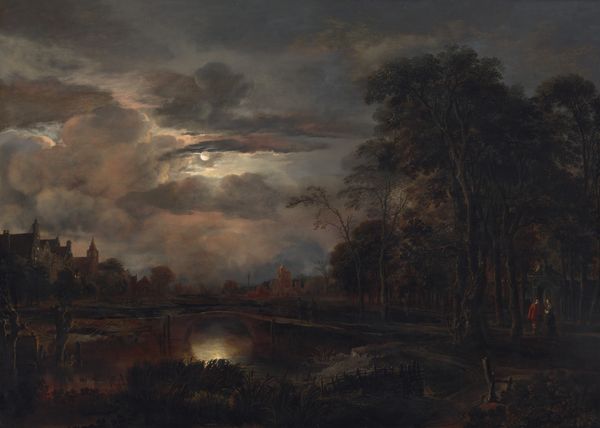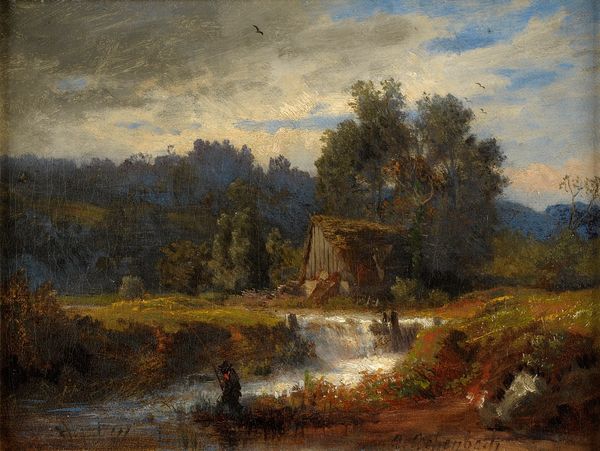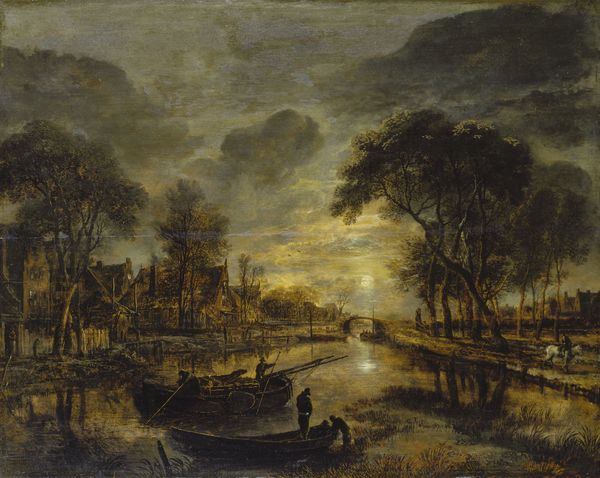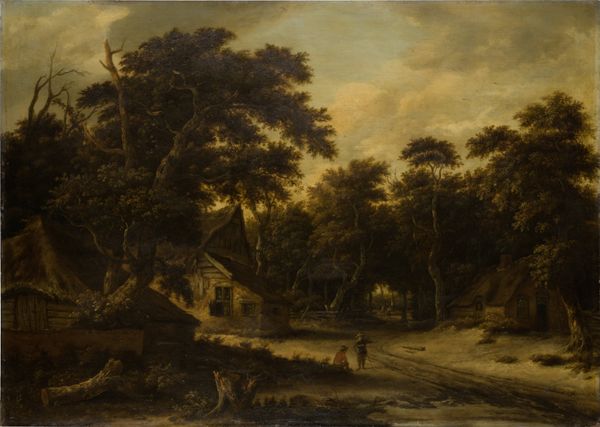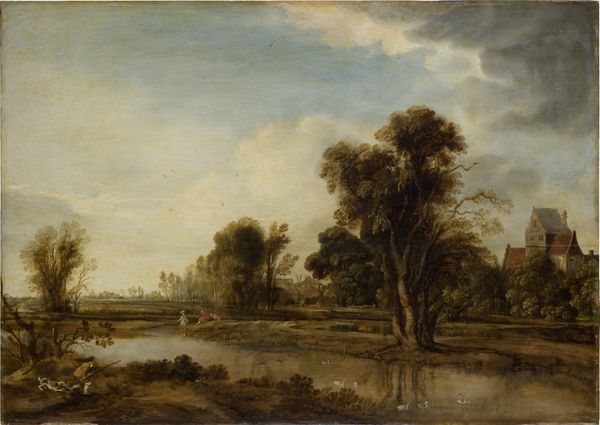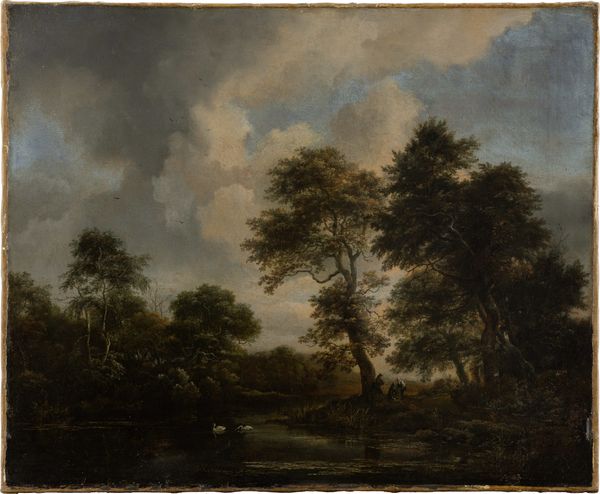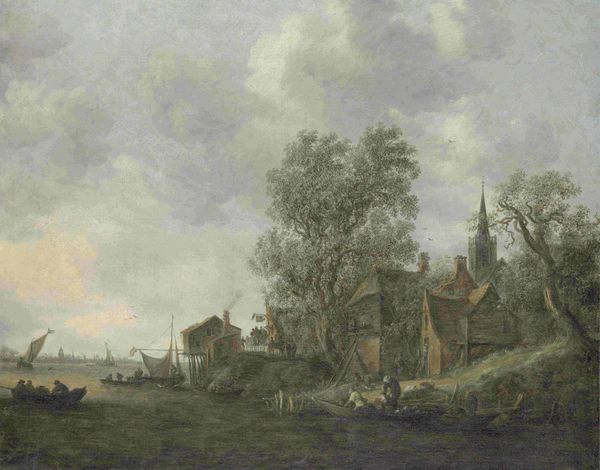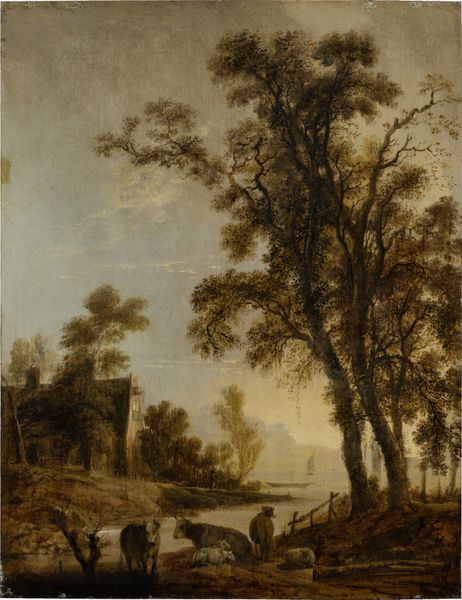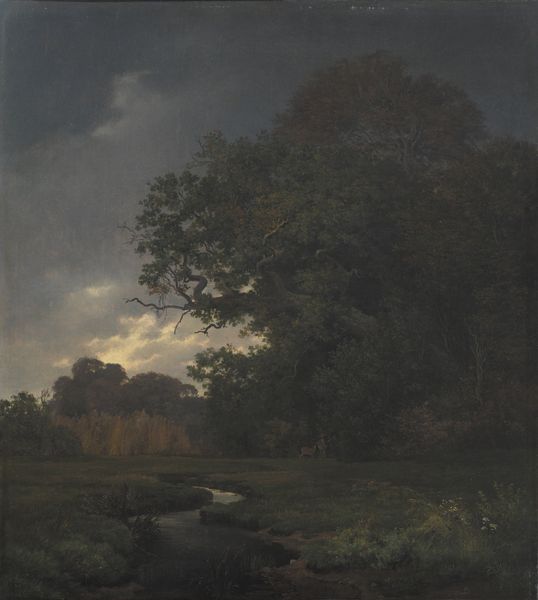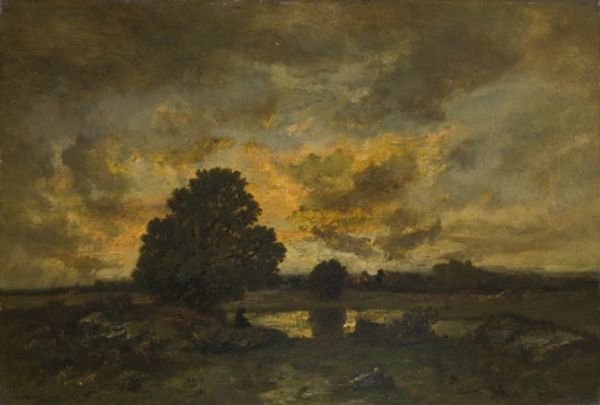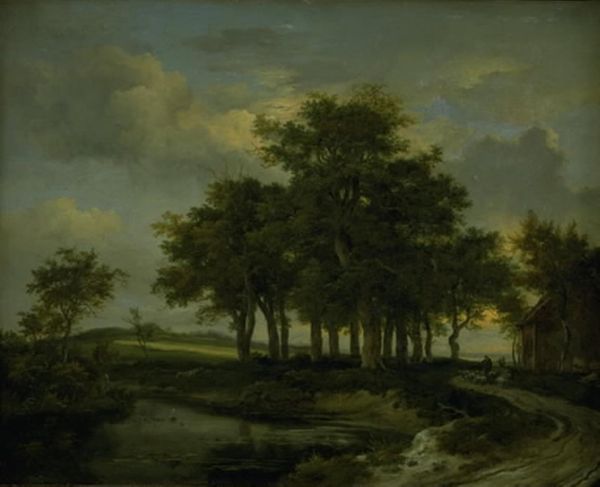
plein-air, oil-paint, impasto
#
plein-air
#
oil-paint
#
landscape
#
impasto
#
romanticism
#
cityscape
Dimensions: overall: 98.4 x 125.7 cm (38 3/4 x 49 1/2 in.) framed: 122.4 x 149.9 x 9.2 cm (48 3/16 x 59 x 3 5/8 in.)
Copyright: National Gallery of Art: CC0 1.0
Curator: Let's turn our attention to John Crome's "Moonlight on the Yare," likely painted between 1816 and 1817. Editor: Immediately, I’m hit by the mood – that slightly melancholy romance of a quiet, dusky evening. It feels…intimate, somehow. Almost secretive. Curator: Indeed. The nocturne has always carried strong symbolic weight in art history, hasn't it? Night is liminal, the time between worlds, full of hidden meanings and emotions that daylight obscures. Crome capitalizes on that. Look at how he uses the moonlight glinting off the water's surface; a symbol of purity and reflection. Editor: I get that completely. But the impasto – the thickness of the paint – also does so much here. It's rough and ready, like the countryside itself. He's not smoothing things over; he’s showing us the grit. You feel the damp air. It's less about idealizing and more about experiencing a place. Curator: Precisely. Romanticism wasn’t only about pretty landscapes; it also encompassed an appreciation for the power of nature, for its wildness and unpredictability. Those skeletal trees in the foreground are visual anchors, symbolic of mortality, aren't they? Editor: Oh definitely. And then the windmills! Those aren’t just there for aesthetics, are they? They were obviously vital to local life and maybe… the fragility of human effort against that eternal moonlight. It almost verges on gothic! Curator: You make a fair point about fragility. These human elements stand in stark contrast with the timelessness of the lunar cycle and the enduring flow of the river Yare, constantly eroding, transforming its banks. It reminds us that nothing is permanent. Editor: Makes you think about the nature of our own memory, and the echoes of a time captured. It's haunting. The dark really works with the overall impact, its use of light versus darkness giving the landscape an ominous tone. Curator: Yes, that tension encapsulates so much of Romantic thought – the beauty and terror existing side by side. Editor: Makes you really feel something. Well, thanks for that insight! I really feel like I’ve looked into the Yare's waters and into the landscape. Curator: It's a view of the world which resonates even centuries after. Thank you, I am happy to exchange our view of Crome's vision.
Comments
No comments
Be the first to comment and join the conversation on the ultimate creative platform.
